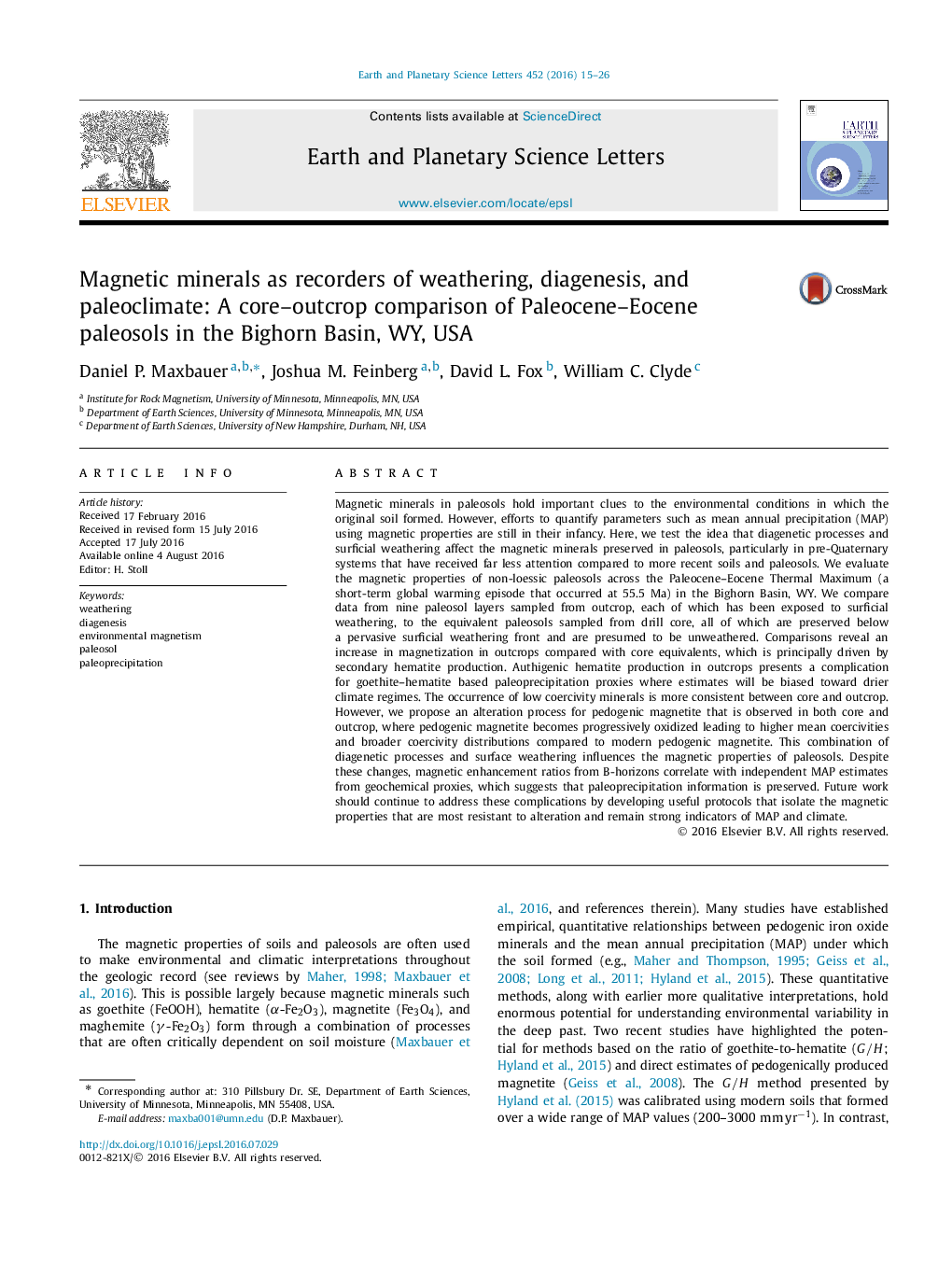| Article ID | Journal | Published Year | Pages | File Type |
|---|---|---|---|---|
| 6427090 | Earth and Planetary Science Letters | 2016 | 12 Pages |
â¢We compare magnetic properties of the same paleosols preserved in core and outcrop.â¢Oxidative weathering forms fine grained, pigmentary hematite in outcrop paleosols.â¢Pedogenic magnetite is altered by diagenetic processes in outcrop and core.â¢Magnetic enhancement ratios correlate with geochemical MAP estimates.
Magnetic minerals in paleosols hold important clues to the environmental conditions in which the original soil formed. However, efforts to quantify parameters such as mean annual precipitation (MAP) using magnetic properties are still in their infancy. Here, we test the idea that diagenetic processes and surficial weathering affect the magnetic minerals preserved in paleosols, particularly in pre-Quaternary systems that have received far less attention compared to more recent soils and paleosols. We evaluate the magnetic properties of non-loessic paleosols across the Paleocene-Eocene Thermal Maximum (a short-term global warming episode that occurred at 55.5 Ma) in the Bighorn Basin, WY. We compare data from nine paleosol layers sampled from outcrop, each of which has been exposed to surficial weathering, to the equivalent paleosols sampled from drill core, all of which are preserved below a pervasive surficial weathering front and are presumed to be unweathered. Comparisons reveal an increase in magnetization in outcrops compared with core equivalents, which is principally driven by secondary hematite production. Authigenic hematite production in outcrops presents a complication for goethite-hematite based paleoprecipitation proxies where estimates will be biased toward drier climate regimes. The occurrence of low coercivity minerals is more consistent between core and outcrop. However, we propose an alteration process for pedogenic magnetite that is observed in both core and outcrop, where pedogenic magnetite becomes progressively oxidized leading to higher mean coercivities and broader coercivity distributions compared to modern pedogenic magnetite. This combination of diagenetic processes and surface weathering influences the magnetic properties of paleosols. Despite these changes, magnetic enhancement ratios from B-horizons correlate with independent MAP estimates from geochemical proxies, which suggests that paleoprecipitation information is preserved. Future work should continue to address these complications by developing useful protocols that isolate the magnetic properties that are most resistant to alteration and remain strong indicators of MAP and climate.
